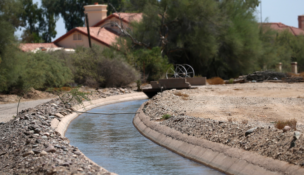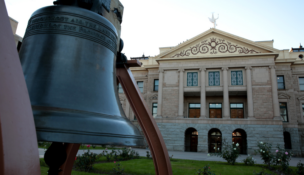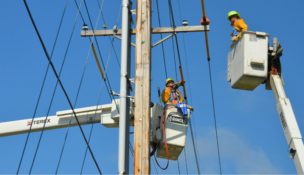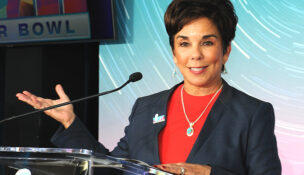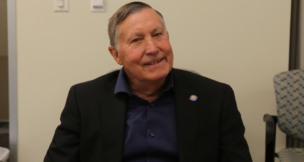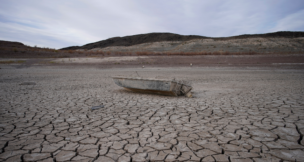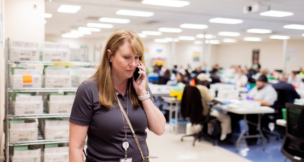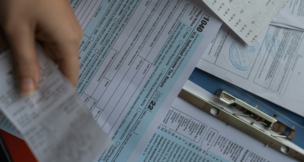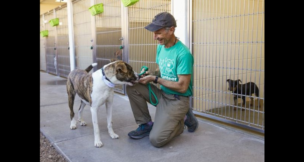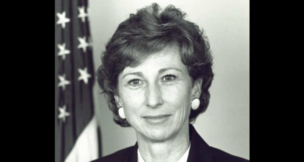Independents make gains in voter registration
Arizona Capitol Reports Staff//July 27, 2007//[read_meter]
Independents make gains in voter registration
Arizona Capitol Reports Staff//July 27, 2007//[read_meter]
Three times as many Democrats registered to vote compared to Republicans since April, according to recently released figures from the Arizona Secretary of State’s Office.
Statewide voter registration increased by nearly 40,000 during that period, with voters now numbering 2,649,367.
However, the story lies in the number of independent voters. They have outpaced the growth of the major parties’ bases during the period, registering five times more than GOP voters, and 1.5 times as many as Democrat voters. (They are described by the Secretary of State’s Office as those registering as “independent” or as members of unrecognized parties and are placed under the “Other” category in the registration report).
A Democratic Party official said they are sensing a “real independent swing” in Arizona.
Voter fatigue
A state lawmaker said the figures could be a reflection of voter fatigue over partisan politics at the local and national level.
“I think you are seeing a trend out there that people do not like to be categorized as either Republican or Democrat,” said Sen. Richard Miranda, D-13.
The growing number of independents does not surprise him, said Miranda, director of a foundation seeking to register and encourage people to join the electoral process.
The senator said he believes voters would rather evaluate candidates based on whether they reflect values dear to them rather than on party affiliation.
A total of 21,087 independents have registered since April, boosting their total to 733,852 or 27.7 percent of the voter population in the state.
Since April 1, registered Republicans increased by 4,288 for a total of 1,023,508 statewide. Registered Democrats increased by 14,313, for a total of 873,301. The number of Libertarian voters now stands at 18,706, an increase of 94.
Independent registration rises
In fact, while the two major parties’ percentage in the voting population dropped — the GOP by 0.88 percentage points and the Democratic Party by 0.3 percentage points — the independents’ share grew by more than 1 percentage point between the 2006 general elections and July of this year. Libertarians gained 0.03 percentage points.
The GOP’s lead over the Democratic Party was chopped by some 10,000 votes during that period. Republicans now hold 38.63 percent of the voting population while the Democratic Party has 32.96 percent.
GOP spokesperson Brett Mecum said he is not worried.
For one, Republicans still command a huge lead — more than 150,000 votes, according to the recent data — over Democrats, Mecum said.
Parties plan drives for new voters
“We are putting together our voter registration drive,” Mecum said. “I would predict that in the next cycle we will probably again eclipse Democrats and make up those margins that we lost this time around.”
There has been an aggressive push at the grassroots level this year by the Democratic Party to register people as voters, and the numbers show the effort is paying off, according to Maria Weeg, the party’s executive director.
Weeg seized on the data to suggest that infighting within the Republican Party and the perceived “extreme ideology” of the latter’s leadership might have had an effect on the registration numbers.
“The fact that you got 21,000 independents registering, I think that’s likely a lot of Republicans changing their registration to independent,” she said.
It also shows an increasing number of the electorate “looking for common sense solutions to everyday problems,” rather than “some of the partisan rhetoric that we are seeing so often out of the Republican Party, particularly here in Arizona.”
She added that Democrats have done a good job of reaching out across party lines.
Asked how her party plans to get independents to vote Democratic, Weeg said they would offer strong candidates who are “speaking to the issues of everyday Arizonans,” such as health care and quality education — the same approach they employed the last time around. (Democrats gained six seats in the state House and one in the state Senate last November).
“I think that one of the things that we are sensing all over the state from our activists on the ground to our elected officials to candidates (is that) there is a real independent swing in Arizona and I think that that’s evidenced by the numbers,” she said. “I think people are really kind of moving toward the position where they are saying, ‘No, I want to really look at what a candidate has to say and vote for the candidate’.”
“That being said,” she added, “I don’t think that you can ignore the fact that the Republican Party in Arizona has had a lot of internal infighting. They’ve got a rather divisive state chair. They’ve been taking shots at some of their highest elected officials and I think that they are seeing the repercussions from that sort of internal fighting perhaps in these numbers. I don’t think that’s attractive to voters.”
However, Mecum said, “I would urge Maria to worry about her own party because she is going to have serious challenges from us coming around this next cycle.”
He also noted that independent voters tend to identify with GOP issues, such as lower taxes and limited government.
Arizona: voting on the issues?
In fact, decisions of Arizona voters can be best described as mixed. They retained Janet Napolitano, a Democrat, as governor, but also maintained a Republican-controlled Legislature. They passed all ballot measures on illegal immigration, such as denying bail to illegal residents accused of serious felonies, but they also easily approved a proposal to increase the state’s minimum wage level and shot down a measure to ban gay marriages.
Mecum acknowledged the number of independent voters is growing but rejected notions that Republicans are switching.
He offered another explanation. The state has a limited open primary, which means independents can vote during the major parties’ primaries.
“I think if that choice was eliminated,” Mecum said, “you’d see a lot more people back into the traditional party structure.”
Secretary of State Jan Brewer said her office is already beginning to see interest build in the upcoming local and presidential preference elections.
“I am confident that over the next few months we will see major increases in recognized statewide party voter registration as interest builds toward those presidential races,” she said.
The state’s voting population stands at 3,763,685. That means 70 percent of eligible Arizonans are registered to vote.






